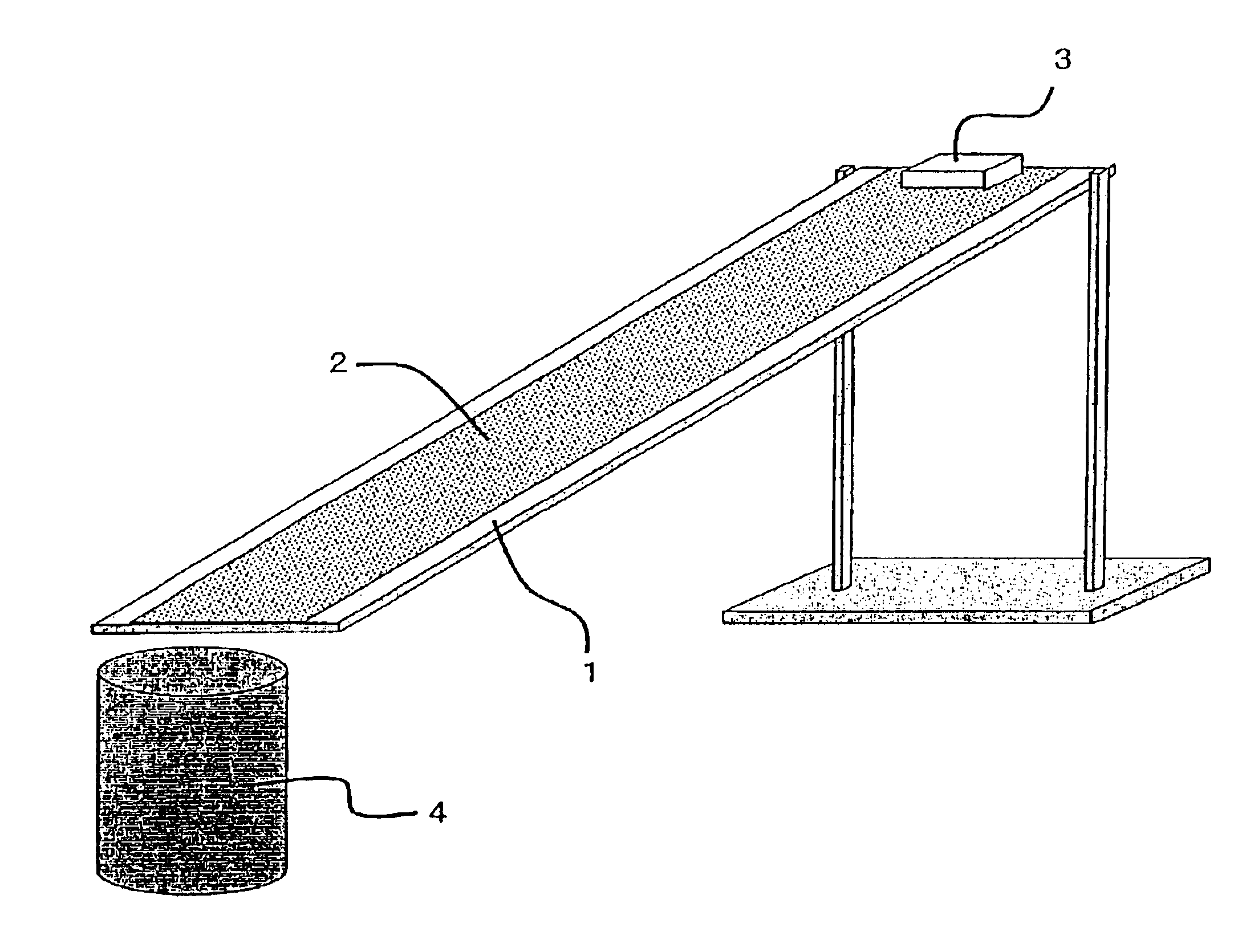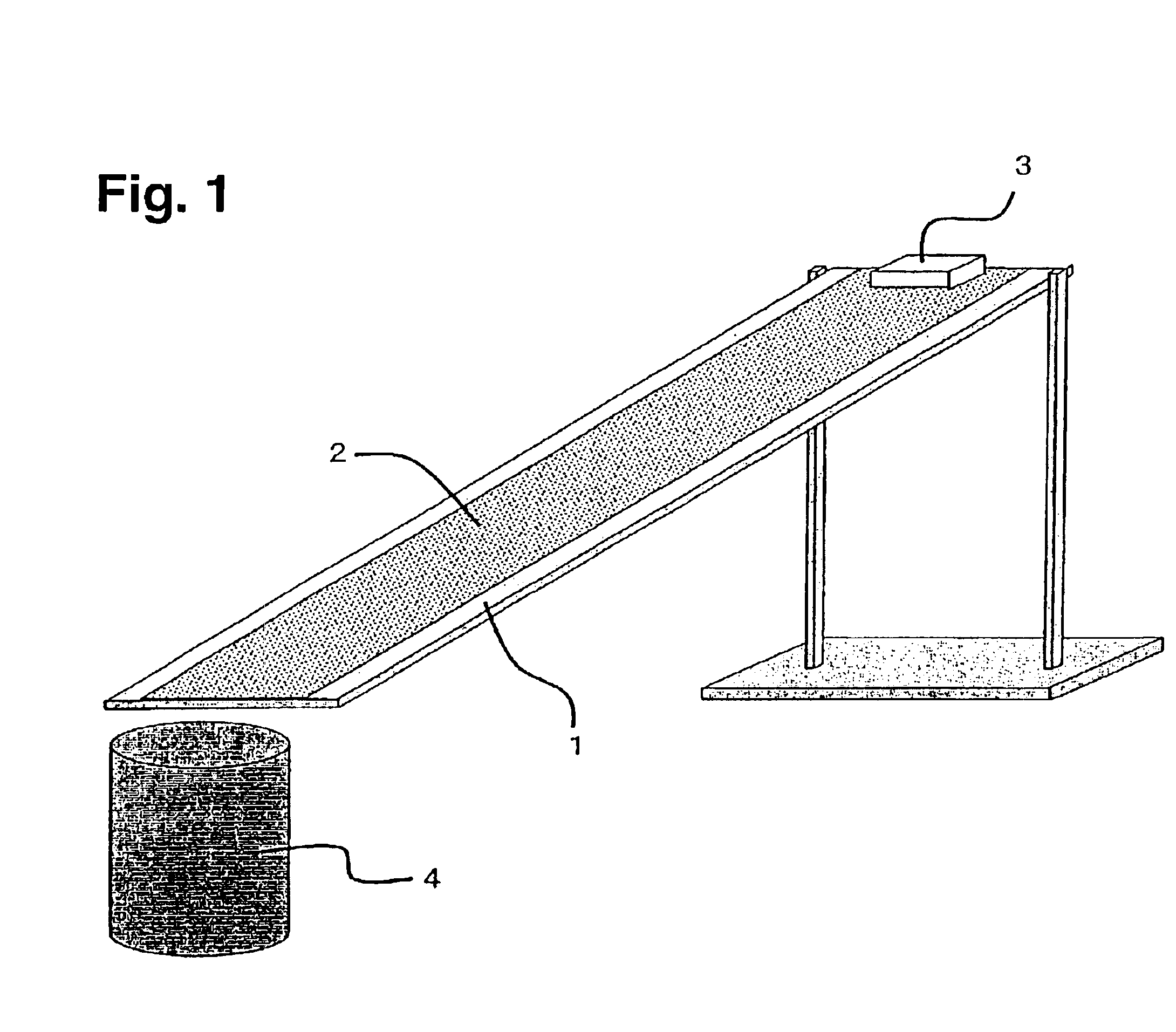Sheet and electronic component packaging container
- Summary
- Abstract
- Description
- Claims
- Application Information
AI Technical Summary
Benefits of technology
Problems solved by technology
Method used
Image
Examples
example 1
[0026]Acetylene black (DENKA BLACK particulate, Denki Kagaku Kogyo K.K.) in a proportion of 24 parts by weight based on 100 parts by weight of HIPS (HI-E4, Toyo Styrene K.K.) was measured, and they were uniformly mixed by using a high speed kneading machine, then kneaded by using a φ45 mm vent type twin screw extruder and pelletized by means of a strand cut method to obtain a resin composition to constitute an electrically conductive layer.
[0027]Using an ABS resin (GR-2000, Denki Kagaku Kogyo K.K.) for a substrate layer, lamination was carried out by means of a feed block method using a φ65 mm extruder (L / D=28) and a T-die to obtain a three-layer sheet comprising electrically conductive layer / substrate layer / electrically conductive layer having an entire film thickness of 0.3 mm. The surface resistivity of the electrically conducive layer in this three-layer sheet was 1.5×106 Ω / □.
[0028]On one side of this sheet, a soluble electrically conductive resin (solvent water / alcohol) contain...
example 2
[0029]Acetylene black (DENKA BLACK particulate, Denki Kagaku Kogyo K.K.) in a proportion of 24 parts by weight based on 100 parts by weight of HIPS (HI-E4, Toyo Styrene K.K.) was measured, and they were uniformly mixed by using a high speed kneading machine, then kneaded by using a φ45 mm vent type twin screw extruder, and pelletized by means of a strand cut method to obtain a resin composition to constitute an electrically conductive layer.
[0030]Using APT-3010 (an antistatic agent-kneaded resin, Denki Kagaku Kogyo K.K.) for a surface layer, lamination was carried out by means of a feed block method using a φ65 mm extruder (L / D=28) and a T die to obtain a three layer sheet of surface layer / electrically conductive layer / surface layer in a layer thickness proportion of 90:120:90 having an entire film thickness of 0.3 mm. In this three-layer sheet, the surface resistivity of the electrically conductive layer was 1.5×106 Ω / □, and the surface resistivity of the surface layer was 6.4×1010...
examples 3 to 5
[0032]15 Parts by weight of carbon black and 85 parts by weight of an impact resistant polystyrene resin as materials were respectively measured, and they were uniformly mixed by a high speed mixing machine, then kneaded by using a φ45 mm vent type twin screw extruder and pelletized by means of a strand cut method to obtain an electrically conductive resin composition. The electrically conductive resin composition was subjected to a φ40 mm extruder (L / D=26) to obtain a sheet having a film thickness of 300 μm. The surface resistivity of the sheet was measured to obtain the surface resistivity of the electrically conductive layer.
[0033]An acryl resin was coated on one side of the above sheet in a thickness of each of 2, 5 and 10 μm by using a bar coater, and evaluation of electrostatic attenuation and carbon detachment with respect to the coated surface was carried out. The evaluation results are shown in Table 1. In each Example, an antistatic effect was confirmed, and no detachment ...
PUM
| Property | Measurement | Unit |
|---|---|---|
| Thickness | aaaaa | aaaaa |
| Thickness | aaaaa | aaaaa |
| Thickness | aaaaa | aaaaa |
Abstract
Description
Claims
Application Information
 Login to View More
Login to View More - R&D
- Intellectual Property
- Life Sciences
- Materials
- Tech Scout
- Unparalleled Data Quality
- Higher Quality Content
- 60% Fewer Hallucinations
Browse by: Latest US Patents, China's latest patents, Technical Efficacy Thesaurus, Application Domain, Technology Topic, Popular Technical Reports.
© 2025 PatSnap. All rights reserved.Legal|Privacy policy|Modern Slavery Act Transparency Statement|Sitemap|About US| Contact US: help@patsnap.com


